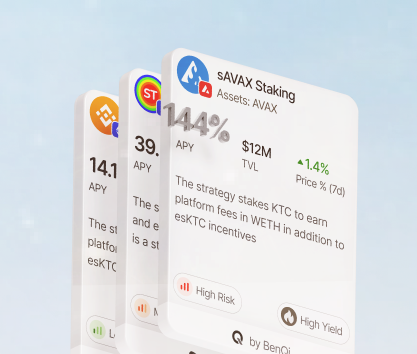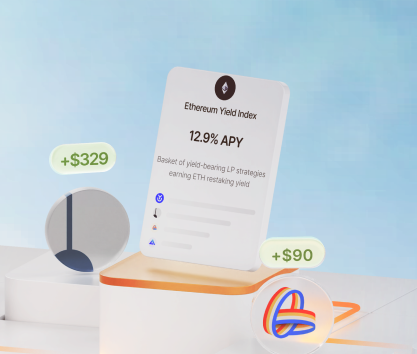Vendor financing is a widely used practice in finance where borrowers take out a loan from a vendor to pay for its products and services. This particular setup can work on different levels but is usually used by business partners. There are some interesting concepts in the world of DeFi that are using the same approach to completely remove any middlemen and even pools from the equation making lending and borrowing even easier. We are going to talk about vendor financing, its uses in tradfi, and some parallels with the DeFi sector.
In 2020, vendor financing and hire purchases accounted for over 20% of all external financing inflows in the UK. Internationally, the statistic is slightly lower but we do not have firm data on many economies that traditionally employ contracts that include vendor financing or hire purchases but are not recorded as such. For example, many sellers in Asian economies prefer such arrangements and make them on a hand-shake basis. The accurate statistic globally is significantly higher.
The prevalence of this particular financing method in the field of business is easily explainable. Complex supply chains with multiple manufacturers along the way are often imbalanced with many participants experiencing product congestion, overproduction, and other issues. Some businesses may not have enough cash on hand to pay for raw materials. Many retailers prefer installment payments instead of lump sums due to high overheads that may leave them struggling systematically if they decide to pay for goods outright.
The vendor finance definition is quite clear as it describes a simple type of loan given by vendors to buyers without the need to seek middlemen. Since banks may take precious time to approve a loan, businesses often prefer getting it from a vendor directly and paying extra interest for convenience and speed. In many cases, these two factors may be the most important.
In the DeFi sector, some pools are designed in a way that makes the borrower and supplier of liquidity enter a relationship similar to that of vendors and their clients. For example, you may use Bitcoin as collateral to take out a loan directly from an exchange to pay for other assets while repaying your debt in installments. Edge Wallet has this feature directly baked into the core functionality making it a preferred choice for many crypto investors who are at the start of their journeys in the sector.
Types of Vendor Finance
Businesses can use three main ways of getting financing directly from vendors with the latter one introduced by the emergence of blockchain technology. These are the types of this financing method:
- Direct debt. This method, as the name suggests, is when a buyer takes out a loan in cash from a vendor to purchase its products. In such cases, interest rates are usually slightly higher compared to banks. However, many buyers are willing to pay extra for the convenience and fast approval.
- Equity can be used as collateral or exchange medium in cases where buyers purchase products for shares. This particular scheme is often used by startups and smaller businesses willing to take on a higher risk of losing equity to acquire the necessary raw materials, equipment, and other products from vendors.
- Cryptocurrency is frequently used in many underbanked regions like Sub-Saharan Africa, South America, Southeast Asia, and the Middle East. In these regions, some businesses are taking out loans in cryptocurrencies to purchase imported goods. These loans are offered by vendors selling international goods and services.
In each case, the main criterion setting it apart from other forms of financing is the source of funds which is always the party selling goods to businesses or individuals. The latter rarely require such loans as their purchases are often planned in advance and the timeline is very flexible. Businesses and entrepreneurs simply have to make purchases to launch their own products and services in time.
The benefits of Vendor Finance
The biggest advantage of vendor financing is the ability to acquire the necessary raw materials, services, and equipment as quickly as possible which can be vital for the survival of a business. For example, if you are running a restaurant and need a new freezer to store food, you cannot wait for weeks until a bank approves a loan. The same goes for any business that has strict deadlines to follow. It is hugely important for any startup to get off the ground quickly and start claiming market share. They are often in dire need of the necessary equipment and software so they are willing to use equity as collateral.
In the battle of “Vendor Finance vs traditional financing”, the former usually wins due to the fact that it is simply faster and does not need the same level of bureaucracy as businesses can make purchases quickly and put what they get to use in the shortest amount of time.
On the other hand, vendors themselves usually benefit from such arrangements despite not receiving payment immediately which can be a significant downside in some cases. Here are the advantages enjoyed by vendors:
- Instead of sitting on a stockpile of unrealized goods, vendors can make sales which is much better than not selling anything at all.
- Vendors collect interest on delayed payments and can estimate their revenues since they are paid in weekly or monthly installments.
- Offering this method of financing to customers is a good way of gaining a competitive edge over competitors.
The overall benefit of using vendor financing arrangements in general is that such transactions promote trust among market participants creating a more relaxed business environment where friction is reduced due to the absence of middlemen. However, irresponsible buyers who do not cover their financial obligations can burn all the bridges with suppliers by failing to pay for what they purchase from vendors.
Vendor finance and supply chain management
All of the above is incredibly important for the stability of any economy regardless of scale. The lengthening of supply chains due to globalization made it crucial for businesses to have quick access to financing and for vendors to offer such services to their trusted customers. The existence of these quick loans where some specifics can be sorted out while the goods and services are already shipped is what makes it essential for the global interconnected economy to function.
With blockchain technology providing additional means of tracking and managing supply chains, the transition of many financial operations to the world of crypto is only natural.
Vendor finance and cash flow management
One of the biggest issues with these setups is the necessity to carefully track all transactions and make sure that giving out loans is profitable. Both parties must evaluate such financing arrangements:
- Vendors have to establish so-called investment centers and hire accountants and professionals to make sure that offering credit lines to customers is worth the effort. Since many factors like repayment failure must be accounted for when estimating profitability and feasibility of lending programs, it is critical for vendors to pay extra attention to the specifics of such sales.
- Businesses making purchases must be very careful when taking additional financial obligations that may have higher interest rates than what banks can offer. It is true that timelines are crucial and acquiring goods and services as quickly as possible can be a matter of life and death for a business but it is also important to realistically estimate the ability of a business to pay off debt.
Since these arrangements are somewhat different from many other models of financing, cash flow management becomes more complex and may require additional analysis and accounting. Businesses and vendors must consider these overheads. It is also important to think thoroughly about vendor finance and risk management as any debt accrued by a business negatively affects its bottom line.
Balancing the additional managerial load and considering all the pros and cons of vendor financing can be extremely challenging for startups and business owners without much experience in finance. The addition of new digital assets to the field of financing created a new problem for newcomers without any prior exposure to widely popular cryptocurrencies used in business operations across the globe. It is important for all enterprises to acquire expertise in blockchain-based currencies like Monero, Ripple, Bitcoin, Litecoin, Tether, and many others.
Liquidity and profitability of vendor financing
As mentioned previously, estimating profitability and feasibility can be difficult for vendors since they have to offset payments that arrive late with risk premiums paid by purchasers. However, calculating the premium can be quite challenging as ensuring fairness and affordability without compromising your own business is a tough task for the vast majority of corporations. Hiring more personnel to handle these issues can be a good idea but these costs must be also included in premium calculations.
Another problem is liquidity. Vendors do not acquire any when making sales through in-house financing. When vendors act as buyers of raw materials and equipment themselves as they are also parts of supply chains, they have to also borrow from their suppliers. This cascading borrowing can create unnecessary stress and cause a domino effect when someone in this complex system stops paying. In this sense, credit lines from banks are usually more flexible and allow for more robust financing solutions within any supply chain.
Vendor Finance case studies
We want to talk about some interesting solutions for vendor financing that have been developed in various industries. Below are some prominent examples and unique cases of using this particular method of capital acquisition:
- Zydus Life and CashFlo recently teamed up to build a unified system where the pharmaceutical giant can easily access cash to allow customers to make purchases without trying to get funding from financial institutions like banks and investment firms. Instead, they can request a delayed payment with an added interest and receive funds from CashFlo immediately while servicing debt with either Zydus or CashFlo. This particular setup has been working great and served as an example for many other pharmaceutical companies in Southeast Asia.
- Prime Revenue is a company focused on creating the necessary financial instruments for all vendors who would like to provide financing to their customers without the need to get in touch with banks. The company offers credit directly to vendors. The latter simply takes out the necessary amount when needed and uses it to cover purchases by clients. Prime Revenue handles all the calculations, estimations, and even banking for vendors creating a smooth experience for all participants of supply chains. This particular company is focused on the automotive industry and works with such widely recognized brands as Volvo, Genuine Parts, and Michelin.
- Vendor Finance is a protocol deployed on Arbitrum. It is a DeFi platform facilitating non-liquidation loans on any assets with terms determined by lenders who do not provide their funds to pools but instead offer their funds to potential borrowers on a P2P basis. At the same time, the protocol aims to create pools with similar functionality. Currently, the protocol has a TVL of just $96K and operates across Mantle, Arbitrum, and Ethereum. The adoption rate is very low but there are alternatives like Zero-Liquidation Loans by MYSO Finance that work in a very similar way.
Whether this model of financing will thrive in a rapidly deglobalizing world or turn into a niche financial instrument is a question that only time will answer. Presently, it is one of the most popular ways of making purchases from vendors and it is gaining popularity in many relevant regions with cheap labor costs and a huge potential for industrialization.









